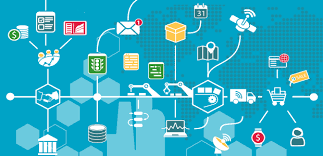
The internet of things has the potential to transform the world by altering how the government runs the country. By introducing technologies such as mobility, automation, and data analytics, IoT has the potential to transform the way the government collects data. IoT refers to the networking of devices such as embedded sensors, actuators, and other devices that can collect and transmit data over a network. This information is analyzed by government agencies. Let’s look at some IoT applications in the government sector.
Table of Contents
IoT in the Public Sector
The following are some examples of IoT applications in the government sector:
City Administration and Planning
Controlling a large city and tracking its waste management can be time-consuming and tedious.
IoT sensors can be placed throughout the city to monitor the area and transmit details and information about waste collection in that area.
Similar sensors and applications can assist the government in gathering data on the population, water system, food supply, social services, transportation routes, zoning, mapping, and other topics.
IoT sensors collect and transmit information about city residents.
They can also provide real-time data on public property.
Government officials can collect real-time data and information in less time, allowing them to implement changes more quickly.
Employment Opportunities
It is easy to understand that as IoT grows, more job opportunities in the IT sector will become available. IoT also creates jobs in other industries such as manufacturing, production, transportation, and supply. Government agencies can use IoT to forecast the future of a specific industry and create more job opportunities for tomorrow’s youth.
Defense of national borders
Installing and deploying IoT at national borders aids in the reduction of crimes such as trafficking, illegal immigration, terrorism, and so on. IoT sensors and camera surveillance scan the border in real-time and provide real-time data. Drones equipped with cameras assist the government in remotely monitoring the border.
Sensors, cameras, data processing tools, and transmission modes are heavily used to secure borders in countries such as France, North Africa, and Spain. Overall, IoT aids in border security and the reduction of national crimes.
Intelligent City
The Internet of Things has the potential to manage, track, and control an entire city. This alone explains the power of IoT and how much it affects people’s lives. Connected public transportation, traffic monitoring, and control, water level and flood monitoring, weather monitoring, 24/7 video surveillance, connected street lights, and other technologies are available in smart cities.
Cities that are smart, sustainable, tourist-friendly, and secure are being built with the help of major corporations such as Cisco, Schneider Electric, Siemens, Microsoft, and Huawei.
Quicker response times in the event of an emergency
The government can respond quickly in the event of an emergency, such as a fire, flood, or high-speed winds, by strategically placing environmental sensors throughout the city. Sensors record information about the environment’s constant physical changes. This data is routed through a wide network of gateways to the government’s servers.
If a criminal is on the run, cops can more easily apprehend the criminal by tracking the car using IoT applications.
System of Water Management
IoT aids in the identification of risks in water plants and the water management system. IoT employs sensors and actuators to provide real-time analysis of water bodies in a neighborhood, city, or town. This enables government agencies to plan water supply more effectively and easily. They can detect problems in the system and then repair and renew them more quickly to prevent further damage.
IoT helps to avoid sewage overflow risks by monitoring water bodies and their supply chain and quickly alerting officials in the event of a disruption in the flow of water. IoT aids in energy conservation, water management, and wastewater treatment plant optimization.
Disaster prevention and management
Disaster management is one of the government’s primary applications of IoT. IoT saves land from potential destruction, provides immediate assistance to victims, and aids in the recovery from natural disasters.
IoT helps to prevent disasters by sensing changes in the environment and constantly storing real-time data. Administrators and government officials monitor these changes and take the necessary precautions to avoid natural disasters.
Geofencing and perimeter fencing via NFC aid in the generation of effective responses.
Predictive data and data analysis raise awareness of the situation, allowing for more effective planning.
RFIDs are used to recover from natural disasters.
Government E-services
IoT assists citizens in managing government-provided services and plans.
Governments have implemented online applications to provide identification cards, citizenship documents, property and registration papers, and other services.
In most cases, IoT benefits both citizens and the government by saving time and money.
Some of the best examples are IoT-based services such as e-district, the PDS Portal of India, and My Gov.
Health-care services
The health of a country’s citizens is a major responsibility of the government.
Virtual healthcare and smart hospitals are assisting in the remote connection of thousands of patients to doctors.
Doctors have access to real-time updates on their patients, and IoT applications send alerts if a patient’s health deteriorates.
IoT sensors monitor the critical health status of patients and send continuous reports to doctors, who then advise on additional precautions.
Education
A good education system symbolizes good governance. The government is bridging the gap between students and learning by incorporating the internet of things into education systems.
Virtual learning, smart boards, and smart classrooms are IoT-based applications that help connect students who cannot travel long distances to school. Teachers can use IoT systems to track a student’s performance, manage attendance, correct answer sheets, and so much more.
Conclusion
IoT plays a critical role in ensuring good governance. People cannot be on high alert all of the time, which is where IoT comes in. It provides real-time data and analytics on the data. The processed data is archived in the cloud for later retrieval.
We learned about the various applications of IoT in the government sector in this article.

